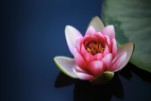Acupuncture, Cupping, Moxibustion
Acupuncture is one of the most effective forms of traditional alternative therapy and can help with fertility, natural conception and IVF; it can help alleviate discomfort from arthritis, osteoporosis, chronic pain, digestive problems, hormonal imbalances, high blood pressure, migraines, bronchitis, depression and stress. Acupuncture can also be used to help with common colds, hay fever, smoking addiction and side effects of cancer treatment.
It's a mystery and a miracle: An acupuncture needle inserted in the pinkie toe changes a breech baby's position in the womb. How is this possible?
Recent advances in technology have helped unlock the biological mysteries of this 3,000-year-old medical practice. Researchers are closer to understanding how an acupuncture needle can subtly adjust the body's tissues, nerves, and hormones. National institutes of health, NHS and World Health Organization have given formal approval of certain uses of acupuncture.
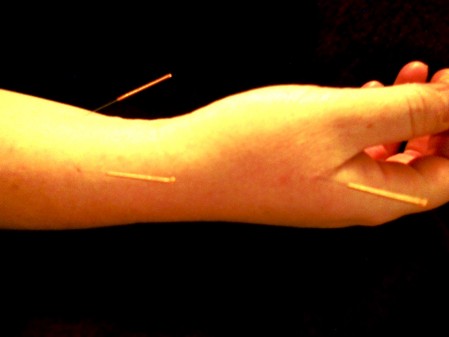
A growing body of evidence-based clinical research shows that acupuncture safely treats a wide range of health problems:
fertility
IVF assistance
women's health
chronic cystitis
insomnia
anxiety
fibromyalgia
chronic tiredness
addiction
stroke
facial palsy
asthma
dental pain
side effects from cancer treatment
body aches & pains
recovery from sports injuries
arthritis
sciatica
frozen shoulder
tennis elbow
headaches
migraines
Ella was trained as an acupuncturist to British Acupuncture Council (BAcC) standards at the University of Salford. She abides by BAcC codes of hygiene and professionalism. Ella Dunbar Therapies premises have been inspected and licensed for acupuncture by Greater Manchester Environmental Health Department.
Ella is qualified to use both the TCM (Traditional Chinese Medicine) and Dr. Tan's Balance method in acupunture practice.

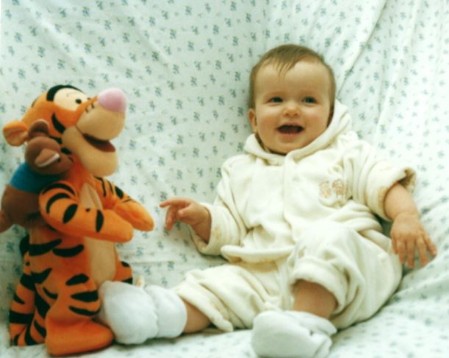
Acupuncture for fertility
Acupuncture enhances fertility for couples hoping to conceive naturally and for couples going through IVF or other assisted reproductive technology.
With natural conception, acupuncture may work by increasing blood flow to the uterus and by regulating woman's menstrual cycle and reproductive system hormones.
Current research is showing that acupuncture can help increase the effectiveness of IVF by up to 60%. With assisted reproductive technology, acupuncture may help by improving the health of the uterine lining and ovarian function, potentially increasing egg quality and quantity.
In addition, acupuncture can help relieve some of the side effects of the medications taken while undergoing IVF.
Ella has a comprehensive “fertility” protocol, where together with acupuncture she includes counselling in nutrition for both partners helping couples become healthier, more balanced, and more fertile.
(Ella has undertaken postgraduate training in acupuncture for male and female fertility with the famous acupuncturist Jani White www.naturechild.co.uk)
Acupuncture treatment is beneficial during pregnancy for morning sickness, breech presentation and can help to induce labour naturally. It is also effective for women suffering with menstrual problems, PCOS, fibroids, endometriosis and menopausal symptoms.
Acupuncture for PCOS
Polycystic ovarian syndrome (PCOS) is a common hormonal disorder affecting about 5% - 10% of women at reproductive age PCOS (R.N.A.Hameed, 2013). It is strongly associated with ovulatory dysfunction, overweight, increased risk for insulin resistance, which can lead to type 2 diabetes, hypertension, cardiovascular risk factors and impaired mental health later in life (Stener-Victorin 2008). Current conventional medical treatments for women with PCOS are prescription medications, surgery, and lifestyle changes aimed at controlling symptoms.
There are several systematic reviews on acupuncture for PCOS, and in general, acupuncture seems to help with balancing hormones, improving the quality of monthly periods, and promoting physical and emotional well-being.
Acupuncture for pain relief
With the safety of pain relievers being questioned, many new studies give pain sufferers more reason to try acupuncture. One advantage of this type of treatment is that the rates of side effects are almost zero in comparison to many drugs or other accepted medical procedures used for the same conditions.
Acupuncture for smoking cessation
Acupuncture as an alternative treatment for smoking cessation has a growing number of converts. In fact, acupuncture has an ability to reduce cravings and alleviate withdrawal symptoms such as irritability, anxiety and difficulty concentrating.
Acupuncture for faicial rejuvenation
Facial Rejuvenation Acupuncture can help reduce wrinkles and puffiness without complex surgeries or injections.
Acupuncture for insomnia and anxiety
Acupuncture certainly can help you feel more relaxed and less anxious.
How does acupuncture work?
Traditional Chinese Medicine is based on an energetic model rather than the biochemical model of Western medicine. The ancient Chinese recognised the vital energy Qi flowing in the human body along specific pathways called meridians. Each meridian is associated with particular internal organs. When the energy becomes blocked, disease occurs. The meridians communicate with the surface of the body at specific locations called acupuncture points. Needles inserted in these points influence the Qi and help internal organs.
Using pulse and tongue diagnosis, along with findings from other signs and symptoms, the practitioner defines a treatment plan.
Is acupuncture safe?
Acupuncture needles are very fine, sterile and disposable. A licensed acupuncturist has had thorough training on the safe implementation of this treatment modality. Ella was trained as an acupuncturist to British Acupuncture Council (BAcC) standards. She abides by BAcC codes of hygiene and professionalism.
Is acupuncture painful?
Acupuncture needles are very fine and flexible, about the size of a human hair. They bear no resemblance to the needles used when receiving an injection. In most cases, insertion by a skilled practitioner is performed with a minimum of discomfort. Most patients find the treatments very relaxing and many fall asleep during the treatment. Acupuncture may include a variety of non-needle techniques, such as moxibustion and cupping.
Cupping therapy was used in Egypt dating back some 3,500 years, where its use is represented in hieroglyphic writing. It is a therapy that uses a stimulus to enhance the body's own defences, stimulating metabolism and enabling the body to excrete substances which have been causing pain or discomfort. Cupping is effective for relief from muscle spasms, back pain, arthritic and rheumatic problems, congestion in the chest resulting from colds and flu.
How cupping works
We offer only Dry Cupping at this practice. The therapist places a small piece of burning cotton wool in a round glass, which looks like a small fishbowl, to create some vacuum inside the cup. Then the cup is quickly positioned on to the skin. The suction anchors the cup to the body, and the skin is drawn up a little to seal itself. The cups are left on the body whilst the area beneath is treated and the energy is moved. Depending on skin quality, the cupping therapy may leave slight marks on the skin. These marks are light bruises and usually disappear within 2-3 days.
Moving cupping is a slightly different therapy and feels more like a massage. The practitioner applies massage oil on the patient's skin and then uses a cup with a lighter suction allowing a gentle movement of the cup over the skin. This therapy can be very pleasant and effective for those who has tight muscles, cramps, pain or discomfort on their back or shoulder.
How cupping works
We offer only Dry Cupping at this practice. The therapist places a small piece of burning cotton wool in a round glass, which looks like a small fishbowl, to create some vacuum inside the cup. Then the cup is quickly positioned on to the skin. The suction anchors the cup to the body, and the skin is drawn up a little to seal itself. The cups are left on the body whilst the area beneath is treated and the energy is moved. Depending on skin quality, the cupping therapy may leave slight marks on the skin. These marks are light bruises and usually disappear within 2-3 days.
Moving cupping is a slightly different therapy and feels more like a massage. The practitioner applies massage oil on the patient's skin and then uses a cup with a lighter suction allowing a gentle movement of the cup over the skin. This therapy can be very pleasant and effective for those who has tight muscles, cramps, pain or discomfort on their back or shoulder.
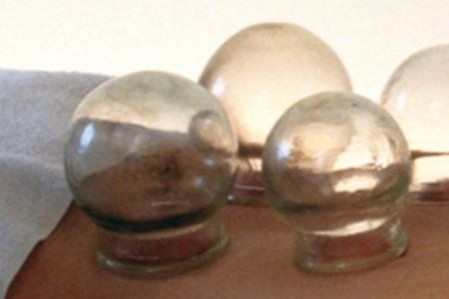
Moxibustion is a traditional Chinese medicine technique that involves burning of mugwort, a small spongy herb. The purpose of moxibustion, as with most forms of traditional Chinese medicine, is to strengthen the blood, stimulate the flow of energy, and maintain general health. During moxibustion, the practitioner lights one end of a moxa stick, roughly the shape and size of a cigar, and holds it close to or moves over the area being treated for several minutes. The patient usually experiences a pleasant heating sensation, but there is no pain, blistering or scarring.
Moxibustion has successfully been used to turn breech babies into a normal head-down position prior to childbirth. A landmark study published in the Journal of the American Medical Association in 1998 found that up to 75% of women suffering from breech presentations before childbirth had foetuses rotated to their normal position after receiving moxibustion at an acupuncture point on the little toe. Other studies have shown that moxibustion may reduce the symptoms of menstrual cramps and abdominal discomfort when used in conjunction with traditional acupuncture.
(Where necessary, moxibustion is integrated into the acupuncture sessions.)
For an appointment or more information on any of our services, please call on
07565825046 or 0161 628 2664
or email to:
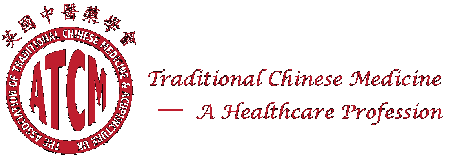
Disclaimer
From March 2011 due to new legislation, we are not allowed to make claims for treatments that has not been scientifically proven. Most complementary therapies cannot be proven despite having been found to be very effective. All the information you find on this website has not been qualified by Scientific Research and any treatment you undertake will be at your discretion. We believe in our treatments and we have an impressive number of clients who believe in them too.
